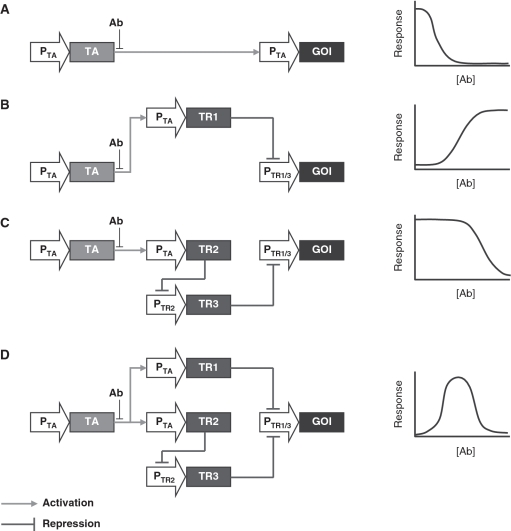Figure 2.
Schematic of differing genetic configurations with expected response profiles to varying inducer (Ab) concentrations. In a standard gradated configuration (A) expression of the gene of interest (GOI) is directly under PTA control which is influenced, in an inducer-dependent manner, by the activity and binding-affinity levels of its cognate transactivator (TA). Within the single cascade configuration (B), PTA is used drive expression of a repressor (TR) that prevents GOI expression from a TR-dependent PTR promoter. In the absence of TR, as occurs during induce presence, PTR-driven expression is enabled, thereby inverting the standard gradated signal. The double cascade configuration (C) is similar but involves the serial insertion of an additional repressor and repressor-dependent promoter downstream of the first repressor. Double inversion of the inducer signal results in a response profile with similar shape but shifted response mid-point to the original gradated signal. The band-pass (D) configuration simply represents the combination of the single and double-cascade configurations in which the end repressor of both cascades are cognate for the same GOI-driving promoter.

